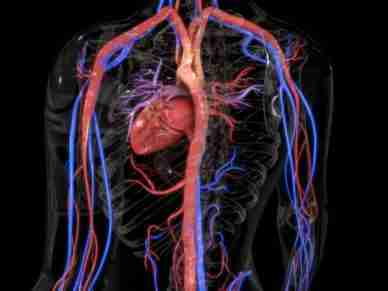An In-Depth Look

Medical negligence occurs when medical care providers fail to meet the standard of care, resulting in harm to the patient. This harm can manifest physically, psychologically, or financially. In such cases, medical negligence lawyers play a vital role in helping victims seek justice and compensation.
Medical negligence is a critical topic that concerns every patient and medical professional. When discussing what qualifies as medical negligence, it is crucial to define it appropriately.
Common examples of medical negligence include surgical errors, misdiagnosis, and improper treatment plans. Each instance reflects a failure to exercise reasonable caution or prudence expected in the medical profession.
Patients who have suffered due to these failures have the right to seek compensation for their pain, suffering, and financial losses.
Proving medical negligence involves demonstrating that the medical professional owed a duty of care to the patient, that the standard of care was breached, and that this breach directly caused harm.
Engaging a lawyer with experience in medical negligence cases can significantly aid in navigating the complexities involved. Successful claims can lead to compensation that covers medical expenses, lost wages, and more.
Key Takeaways
- Medical negligence is when a medical provider fails to meet the standard of care.
- Common examples include surgical errors and misdiagnosis.
- Proving negligence requires showing a breach of duty that caused harm.
Understanding Medical Negligence
Medical negligence occurs when a healthcare professional fails to provide the appropriate standard of care, leading to harm for the patient. It involves specific legal principles and the examination of whether a breach of duty has occurred.
Legal Definition and Principles
Medical negligence is defined as a failure by a medical practitioner to meet the expected standard of care. In Australia, the legal framework requires proving several elements to establish negligence.
Duty of Care:
A healthcare professional must owe a duty of care to the patient. This responsibility mandates that the professional must avoid acts or omissions likely to cause harm.
Breach of Duty:
A breach occurs when the medical practitioner does not adhere to the standard of care. This includes actions or inactions that fall below what a competent healthcare professional would do in similar circumstances.
Causation and Damage:
To qualify as medical negligence, the breach must directly cause harm to the patient. The damage can be physical, psychological, or financial, and the patient must prove that the injury was a result of the practitioner’s failure.
Determining Breach of Duty
Determining whether there has been a breach of duty involves comparing the healthcare professional’s actions to the accepted standard of care within the medical community.
Standard of Care:
This standard is considered the level of care that a reasonably competent professional would provide. It varies depending on the specific circumstances of each case, including the type of medical practice.
Evidence and Expert Testimony:
Courts often rely on expert testimony to establish the standard of care and determine if the healthcare professional breached it. Experts provide insights into what constitutes reasonable care in the specific medical situation.
Professional Guidelines and Protocols:
Medical guidelines and protocols also play a critical role. Adherence to or deviation from these guidelines can significantly impact the determination of whether a breach of the duty of care has occurred.
By scrutinising these aspects, it becomes clearer whether a healthcare professional’s actions constitute medical negligence.
Common Examples of Medical Negligence
Medical negligence can take various forms, leading to significant harm or injury to patients. The main types of negligence often observed are listed below.
Surgical Errors: Surgeons may make critical mistakes during operations. Examples include performing surgery on the wrong body part, conducting the wrong procedure, or causing damage to the body. These errors can result in severe physical injuries and long-term health issues.
Misdiagnosis or Delayed Diagnosis: When a healthcare provider fails to diagnose an illness accurately or promptly, it can lead to inappropriate or delayed treatment. This can worsen the patient’s condition, leading to increased pain, suffering, and medical expenses.
Medication Errors: Incorrect medication dosage or administering the wrong drug can have adverse outcomes. Patients can experience severe side effects, allergic reactions, or worsening of their condition.
Inadequate Testing or Monitoring: Failure to conduct necessary tests or monitor a patient’s condition properly can lead to overlooked complications. This negligence can cause significant harm and require additional medical interventions.
Improper Treatment: Providing incorrect or substandard treatment can result in harm. For instance, using outdated techniques or not following accepted medical practices can lead to avoidable adverse outcomes for the patient.
Birth Injuries: Errors during childbirth, such as improper use of forceps or failing to monitor the baby’s vital signs, can cause severe physical injuries to both the mother and the child. These injuries may result in lifelong consequences and extensive medical expenses.
Anesthesia Errors: Mistakes in administering anesthesia, such as giving too much or too little, can lead to serious complications. Patients may suffer from brain damage, physical injury, or even death.
These common examples highlight the various ways medical negligence can manifest, causing significant harm and adverse effects on patients’ lives.
How to Prove Medical Negligence
Proving medical negligence involves demonstrating that a healthcare provider’s actions fell below the standard of care, causing harm. Essential steps include:
- Establishing a Duty of Care
- The medical professional must have owed a duty of care to the patient.
- Breach of Duty
- Show that the duty was breached by failing to meet the required standard.
- Causation
- The breach must have directly caused physical or psychological harm.
- Damages
- Quantify the damages, such as medical bills, lost wages, pain, and suffering.
Evidence Required
- Medical Records
- Detailed documentation of treatment received.
- Expert Testimony
- Medical experts can corroborate whether the standard of care was breached.
- Personal Statements
- Patient’s account of events and impact on their life.
Compensation
Types of compensation can be categorised into:
- General Damages
- For non-monetary losses like pain and suffering.
- Special Damages
- For monetary losses like medical expenses and lost wages.
Legal Assistance
- Consultation with a Medical Negligence Lawyer
- Critical for navigating complex legal landscape.
- No-Win, No-Fee Policy
- Many Australian law firms offer this, ensuring clients only pay if they win.
Time Limits
Consider the statute of limitations, often three years from the date of the injury or when it was discovered.
Settlement vs Court
Cases may settle out of court. If not, evidence is presented in court to seek a favourable ruling.
Engaging a knowledgeable lawyer can significantly ease this process. They assist in gathering evidence, assessing damages, and negotiating with insurance companies for a successful claim.
Medical Negligence Compensation Amounts
Medical negligence compensation amounts can vary widely depending on the severity and specifics of the case. Factors influencing the compensation include:
Type of Negligence:
- Misdiagnosis: Wrong diagnosis leading to improper treatment.
- Surgical Errors: Errors made during surgery causing further harm.
- Medication Errors: Wrong medication or dosage prescribed.
- Birth Injuries: Injuries to newborns due to negligent care during pregnancy or delivery.
- Cosmetic Surgery: Failed or harmful cosmetic procedures.
- Paediatric Negligence: Errors in the medical care of children.
- Obstetric Negligence: Negligence in obstetric care affecting the mother or child.
Key Elements:
- Pain and Suffering: Compensation for physical and emotional distress.
- Medical Expenses: Covering past and future medical bills.
- Lost Wages: Compensation for loss of earnings due to the injury.
Examples of Compensation Ranges:
- Small Claims: Amounts range from $10,000 to $50,000 for minor issues.
- Moderate Claims: Amounts between $50,000 and $250,000 for moderate injuries.
- Large Claims: Compensation can exceed $1 million for severe, life-altering injuries or death.
Using a free consultation with a medical negligence lawyer can help assess the potential claim. The relationship between the patient and doctor, and the breach of duty of care, are critical components in establishing negligence. A thorough medical report is often necessary to support the claim.
The amounts vary based on the specific circumstances, evidence provided, and the impact on the individual’s life.
















Leave a Reply